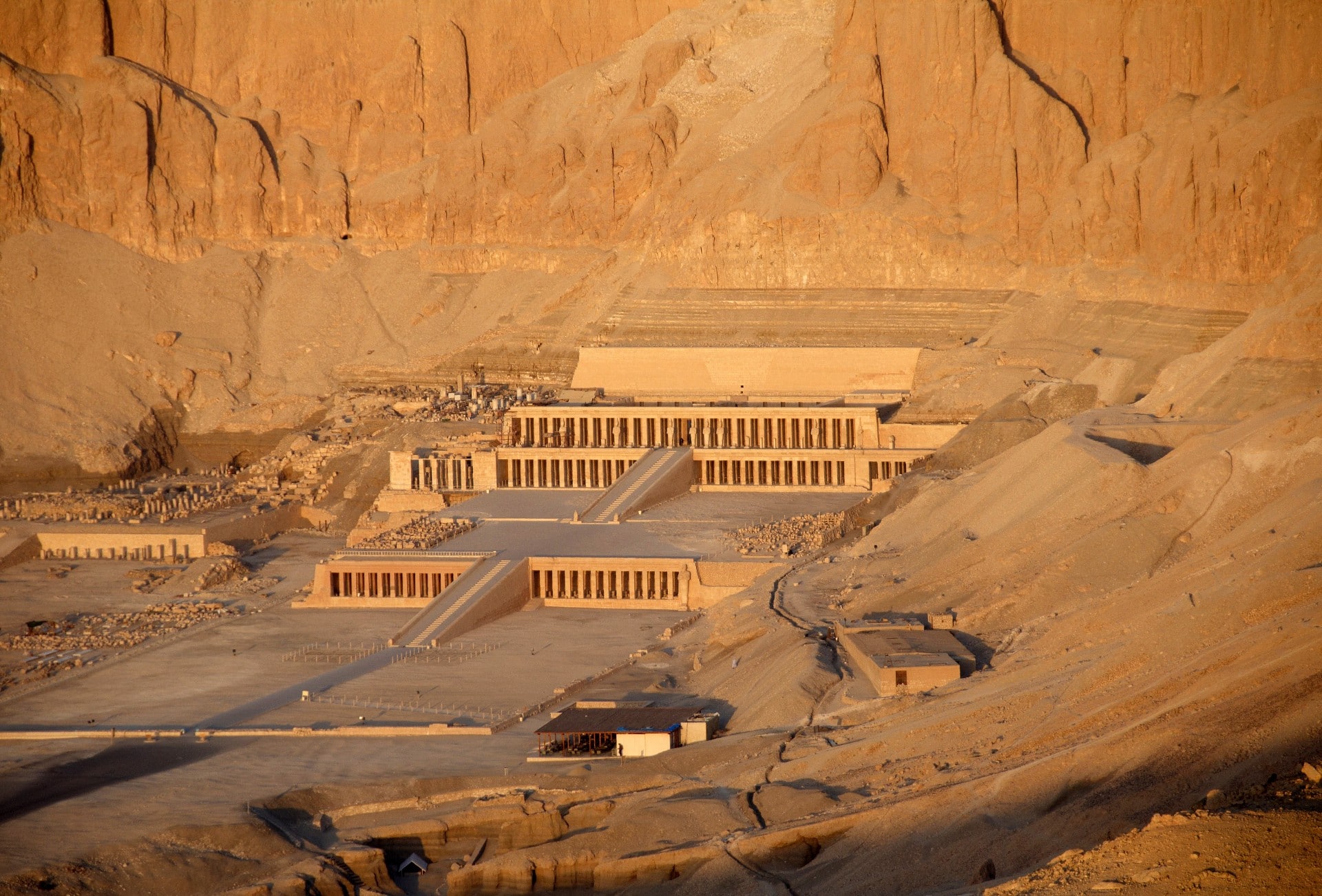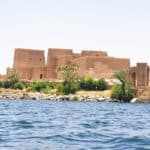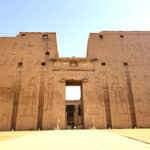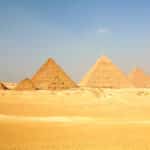This temple honors the Egyptian queen who ruled as king.
The Temple of Queen Hatshepsut is one of the most striking architectural masterpieces in the world. But perhaps even more remarkable is the woman who ordered it.
Beneath the steep cliffs of Deir el Bahri, the Mortuary Temple of Hatshepsut reveals one of the most extraordinary reigns in Egyptian history.
Tiered platforms. Also pillared porticos and vibrant reliefs against a desert backdrop make it one of the most striking architectural masterpieces in the world.
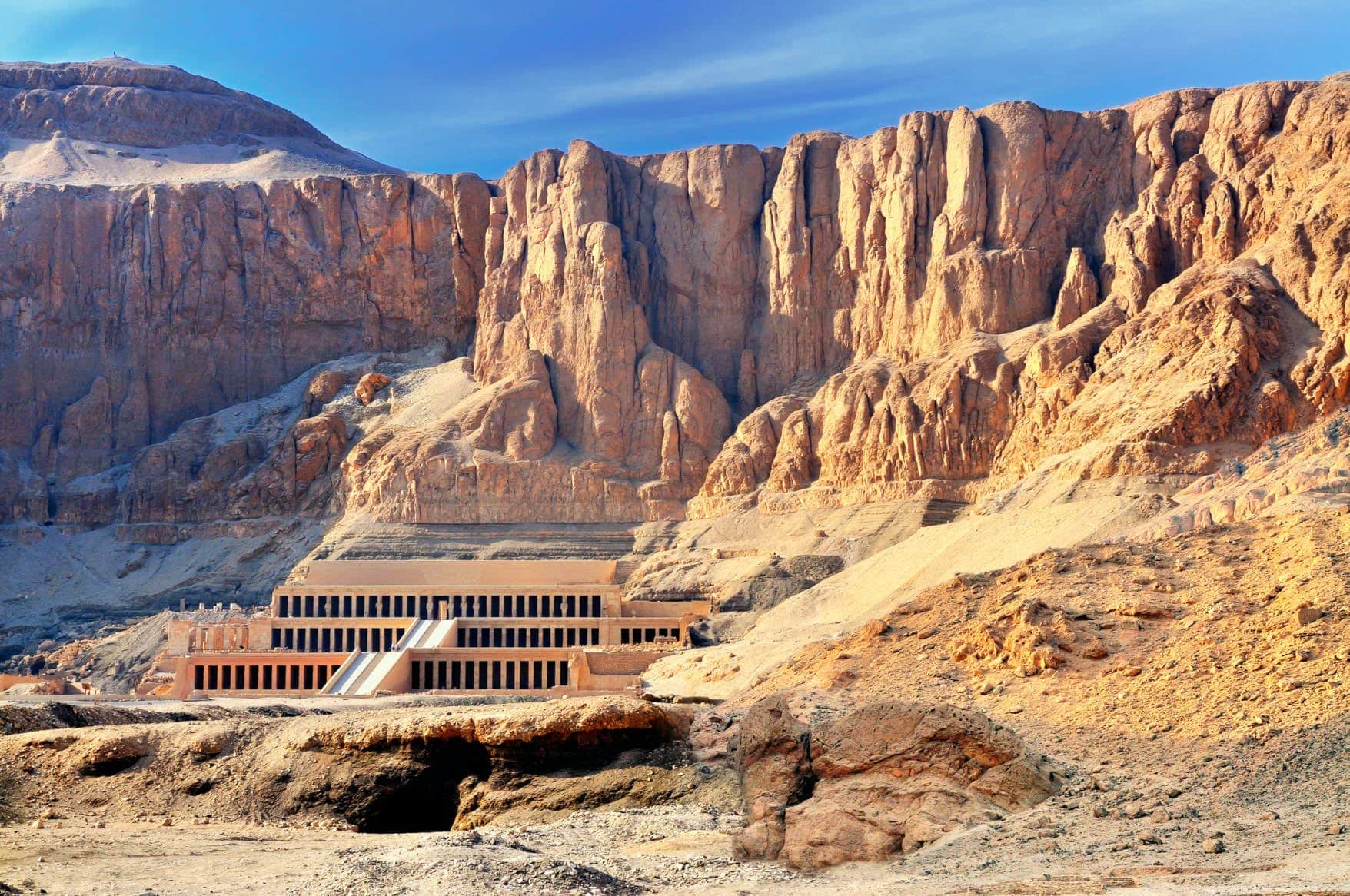
Eldest daughter of King Thutmose I, Hatshepsut first assumed the role of Queen Regent during the 18th Dynasty. After the death of her husband, Thutmose II. Although his son-in-law, Thutmose III, eventually came of age. She adopted the title of pharaoh and ruled for more than two decades.
One of the first female pharaohs of ancient Egypt.
Today, evidence of Hatshepsut's accomplishments can still be seen from Nubia to Beni Hasan. In Thebes, she erected imposing obelisks and built roads in honor of Amun. King of the gods and patron of the pharaohs. Her statues have also evolved, depicting her with the body of a man in full pharaonic garb. Including the traditional beard, shendyt kilt and headdress – a statement of power.
But the jewel in its crown is its mortuary temple, the famous Queen Hatshepsut Temple. Placed on the west bank of the Nile next to the temple of Mentuhotep II to strengthen his position among the kings. Known as Djeser Djeseru, or "holy of holies". Also his temple decorated with scenes from his reign. Also housed shrines to Anubis, god of the dead, Hathor, goddess of fertility. As well as Amon, king of the gods, and Re, god of the sun.
Hatshepsut died in 1458 BC and was buried in the Valley of the Kings. Although she went to great lengths to be remembered after her death. However Thutmose III waged a campaign of great revenge to destroy his legacy 20 years later.
He crushed his statues, defaced his images and erased his cartouche. Some say it was an act of revenge. Others believe that to ensure a smooth succession of his own son to the throne. A third theory proposes that he did not want the reign of the kings – Thutmose I, II and III – to be interrupted by a woman. Between 1923 and 1931, the Metropolitan Museum of Art's Egyptian Expedition excavated fragments of his destroyed statues. Also thrown into pits in front of Queen Hatshepsut's Temple.
Whatever the reason, Thutmose's efforts are successful and Hatshepsut's pioneering reign is slowly forgotten. When scholars deciphered the hieroglyphs in the early 19th century of the Temple of Queen Hatshepsuttemple of Queen Hatshpsut. They were finally able to read the inscriptions on his temple and reconstruct the story. Today, his legacy lives on in surviving architectural achievements throughout Egypt.
In fact among the duties of any Egyptian monarch. Especially the construction of monumental building projects to honor the gods and preserve the memory of their reigns for eternity. These construction projects are not just a grand gesture on the part of the king to appease the ego. But also at the heart of the foundation and development of a unified state.
The construction projects ensured work for the peasants during the period of flooding of the Nile. Also encouraged unity through collective effort, pride in everyone's contribution to the project. As well as they provided opportunities for the expression of ma'at (harmony/balance). The central value of culture, through a common – and national – effort.
Contrary to popular belief, the great monuments of Egypt were built by Hebrew slaves or by any kind of slave labor. Skilled and unskilled Egyptian workers built the palaces. Temples, pyramids, monuments. Also they raised the obelisks as paid workers.
From the Old Kingdom of Egypt (2613-2181 BC) to the New Kingdom (1570-1069 BC). And in a lesser extent. From the Third Intermediate Period (1069-525 BC) to the Ptolemaic Dynasty (323-30 BC). Great Egyptian rulers created some of the most impressive cities, temples and monuments in the world. Thanks to the collective efforts of the Egyptians.
Moving large amounts of building stone not to mention massive monoliths from their quarries to distant building sites. Also enabled the emergence of Egypt as a state that found its expression in monumental construction.
There are many examples of these great monuments and temples throughout Egypt. From the Giza pyramid complex in the north to the temple of Karnak in the south. Of these, the mortuary temple of Queen Hatshepsut (1479-1458 BC) at Deir el-Bahri is one of the most impressive.
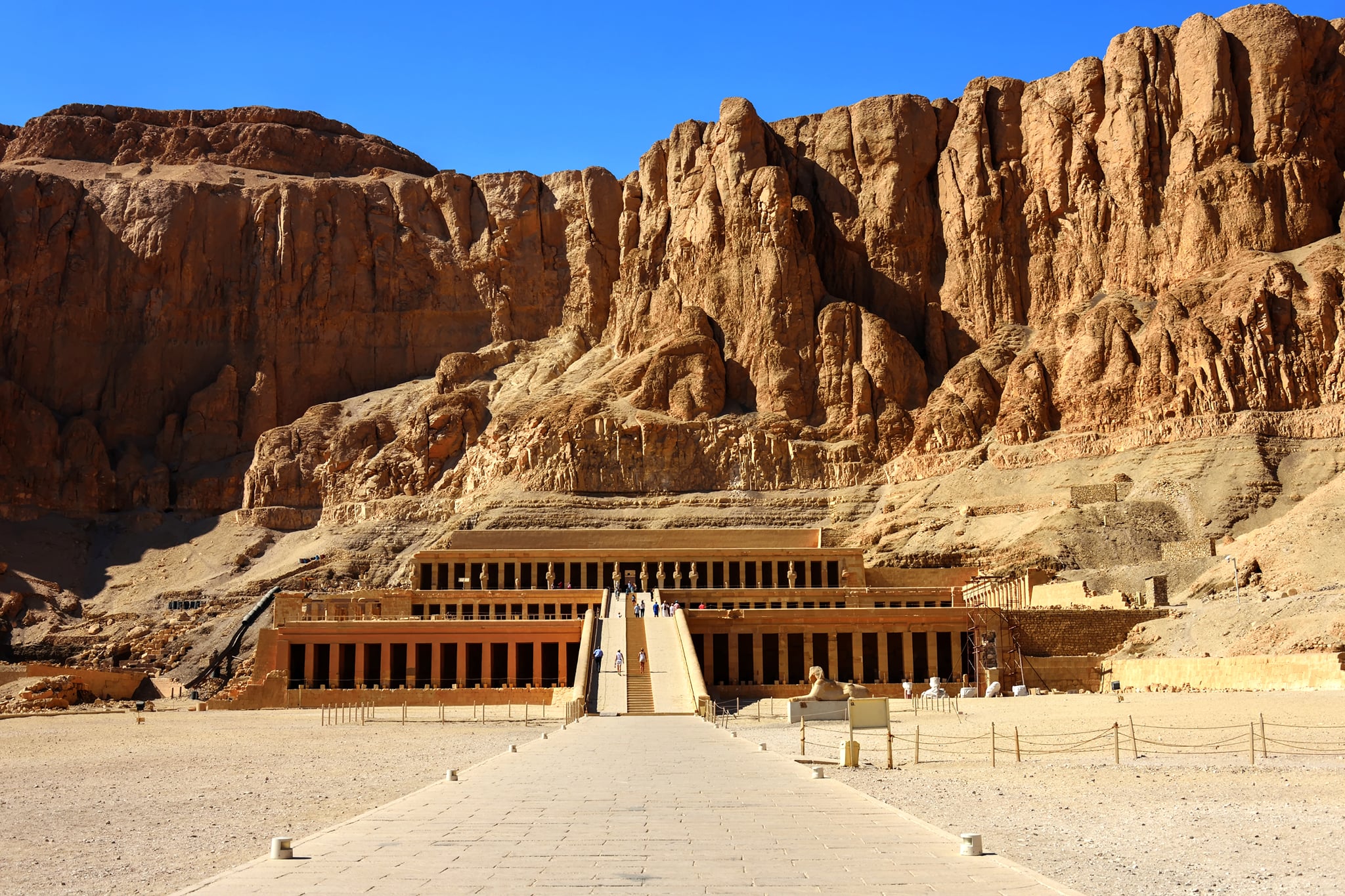
The building of the Queen Hatshepsut temple is built on the model of the temple of Mentuhotep II (around 2061-2010 BC). The Grand Theban Prince who founded the 11th Dynasty and initiated the Middle Kingdom of Egypt (2040-1782 BC). Mentuhotep II considered as a "second Menes" by his contemporaries. A reference to the legendary king of the first dynasty of Egypt. And he also continued to be highly revered throughout the history of Egypt.
The Temple of Mantuehotep II is built during his reign across the river from Thebes at Deir el-Bahri. In fact, the first structure to be raised there. It was a completely innovative concept insofar as it was to serve both as a tomb and as a temple.
The king would not be buried in the complex. But in a tomb carved into the rock of the cliffs behind him. The entire structure designed to blend into the surrounding landscape and towering cliffs. It is the most striking and elaborate funerary complex in Upper Egypt created since the Old Kingdom.
Hatshepsut, an admirer of Mentuhotep II's temple, had her own temple designed to reflect it. But on a much larger scale and, in case anyone misses the comparison. She ordered it to be built right next to the oldest temple. Hatshepsut has always been keenly aware of ways to elevate her public image and immortalize her name. As well as the Mortuary Temple achieved both of these goals.
It would be a tribute to the "second Menes". But, more importantly, to link Hatshepsut to the greatness of the past. Also while surpassing previous monumental works in every way. As a woman in a traditionally male position of power. Hatshepsut understood that she had to establish her authority and the legitimacy of her reign. Much more obviously than its predecessors, as evidenced by the scale and elegance of its temple.
The reign of Hatshepsut
Hatshepsut the daughter of Thutmose I (1520-1492 BC) by his great wife Ahmose. Thutmose I is also the father of Thutmose II (1492-1479 BC) through his second wife Mutnofret. In keeping with Egyptian royal tradition, Thutmose II was married to Hatshepsut at some point before she was 20. During this same period, Hatshepsut was elevated to the rank of God's Wife of Amun. The highest honor a woman can attain in Egypt after the rank of queen. Moreover, and which was to become increasingly political and important.
Then Hatshepsut and Thutmose II had a daughter, Neferu-Ra. While Thutmose II fathered a son with his lesser wife Isis. This son, Thutmose III (1458-1425 BC), named his father's successor. Thutmose II died while Thutmose III was still a child and Hatshepsut therefore became regent. Controlling the affairs of the state until his majority. But in the seventh year of her regency, she broke with tradition and had herself crowned pharaoh of Egypt.
His reign was one of the most prosperous and peaceful in Egyptian history. There is evidence that she commanded early military expeditions. As well as she certainly kept the military at peak efficiency but, for the most part, her time as pharaoh was characterized by prosperous trade, a booming economy and her many public works projects which employed laborers from all walks of life. the country.
Her expedition to Punt seems to have been legendary and was certainly the accomplishment of which she was most proud, but it also seems that all her business ventures were equally successful and she was able to employ an entire nation to build her monuments. . These works were so beautiful and finely crafted that they were to be claimed by subsequent kings as their own.
The design and layout of the Temple of Queen Hatshepsut
She commissioned her mortuary temple shortly after coming to power in 1479 BC and had it designed to tell the story of her life and reign. And to surpass it in elegance and grandeur. The temple was designed by Hatshepsut's steward and confidant, Senenmut. Also Neferu-Ra's tutor and, possibly, Hatshepsut's lover.
Senenmut carefully modeled it on that of Mentuhotep II, but took every aspect of the previous building and made it taller, longer and more elaborate. The Temple of Mentuhotep II featured a large stone ramp running from the first courtyard to the second level. The second level of Hatshepsut reached by a much longer and even more elaborate ramp. It was reached through lush gardens and an elaborate entrance pylon flanked by towering obelisks.
Crossing the first courtyard (at ground level), one could pass directly through the arcades on either side. Which led to small ramps to go up to the second level) or to walk on the central ramp. Whose entrance was flanked by statues of lions. On the second level, two reflecting pools and sphinxes lined the path leading to another ramp that brought a visitor to the third level.
The first, second, and third levels of the temple all featured colonnades and elaborate reliefs, paintings, and statues. The second courtyard houses the tomb of Senenmut to the right of the ramp leading to the third level. An opulent tomb placed under the second court without external elements in order to preserve symmetry. The three tiers exemplify the traditional Egyptian value of symmetry, and since there was no structure to the left of the ramp, there could be no apparent tomb to the right.
On the right side of the ramp leading to the third level was the birth colonnade. And on the left the colonnade of Punt. The Birth Colonnade tells the story of Hatshepsut's divine creation with Amun as the true father. Hatshepsut had the night of her conception inscribed on the walls, recounting how the god came to mate with her mother:
Amun, the embodiment of the majesty of her husband, the king of Upper and Lower Egypt [Thutmosis I]. Found her asleep in the beauty of her palace. She woke up to the divine fragrance and turned to Her Majesty. He immediately went to her, he was excited by her and imposed his desire on her. He allowed her to see him in his god form and she rejoiced at the sight of his beauty after he appeared before her. His love passed through his body. The palace was flooded with divine fragrance.
As the daughter of the most powerful and popular god in Egypt at the time. Hatshepsut claimed for herself the special privilege of ruling the country as a man would. She established her special relationship with Amon early on, possibly before taking the throne, in order to neutralize criticism of her reign due to her gender.
The Punt colonnade told of his glorious expedition to the mysterious "land of the gods" which the Egyptians had not visited for centuries. His ability to launch such an expedition testifies to the wealth of the country under his reign and also to his ambition to revive the traditions and glory of the past.
Punt known to the Egyptians since the beginning of the dynastic period (around 3150 – around 2613 BC). But either the route had been forgotten, or Hatshepsut's more recent predecessors did not consider an expedition worth their time. Hatshepsut describes how her people set out. The warm welcome he received in Punt, and lists in detail the many luxuries brought back to Egypt:
Loading very heavily laden ships with wonders of the land of Punt; all the well-scented woods of God's Land. Plus heaps of myrrh-resin, fresh myrrh trees, ebony, and pure ivory. Also green gold from emu, cinnamon wood, Khesyt wood, Ihmut incense, Sonter incense, eye cosmetic. As well as monkeys, dogs, and southern panther skins. Never has a king received such a product since the beginning of Egyptian history.
At either end of the second level colonnade were two temples: The Temple of Anubis to the north and the Temple of Hathor to the south. As a woman in a position of power, Hatshepsut had a special relationship with the goddess Hathor and invoked her often. A temple for Anubis, the guardian and guide of the dead, was a common feature of any mortuary complex. One wouldn't want to offend the god who was responsible for leading his soul from the grave to the afterlife.
The access ramp to the third level, perfectly centered between the Birth and Punt colonnades. Takes the visitor to another colonnade, lined with statues, and the three most important structures. The Chapel of the Royal Cult, the Chapel of the Solar Cult and the Sanctuary of Amun.
The temple complex built into the cliffs of Deir el-Bahri and the sanctuary of Amun. In fact the holiest area of the site is cut into the cliff itself. The Chapel of Royal Worship and the Chapel of Solar Worship both depicted scenes where the royal family made offerings to the gods. Amun-Ra, the composite creator/sun god, is prominently displayed in the chapel of solar worship. As well as Hatshepsut and her close family kneeling before him in his honor.
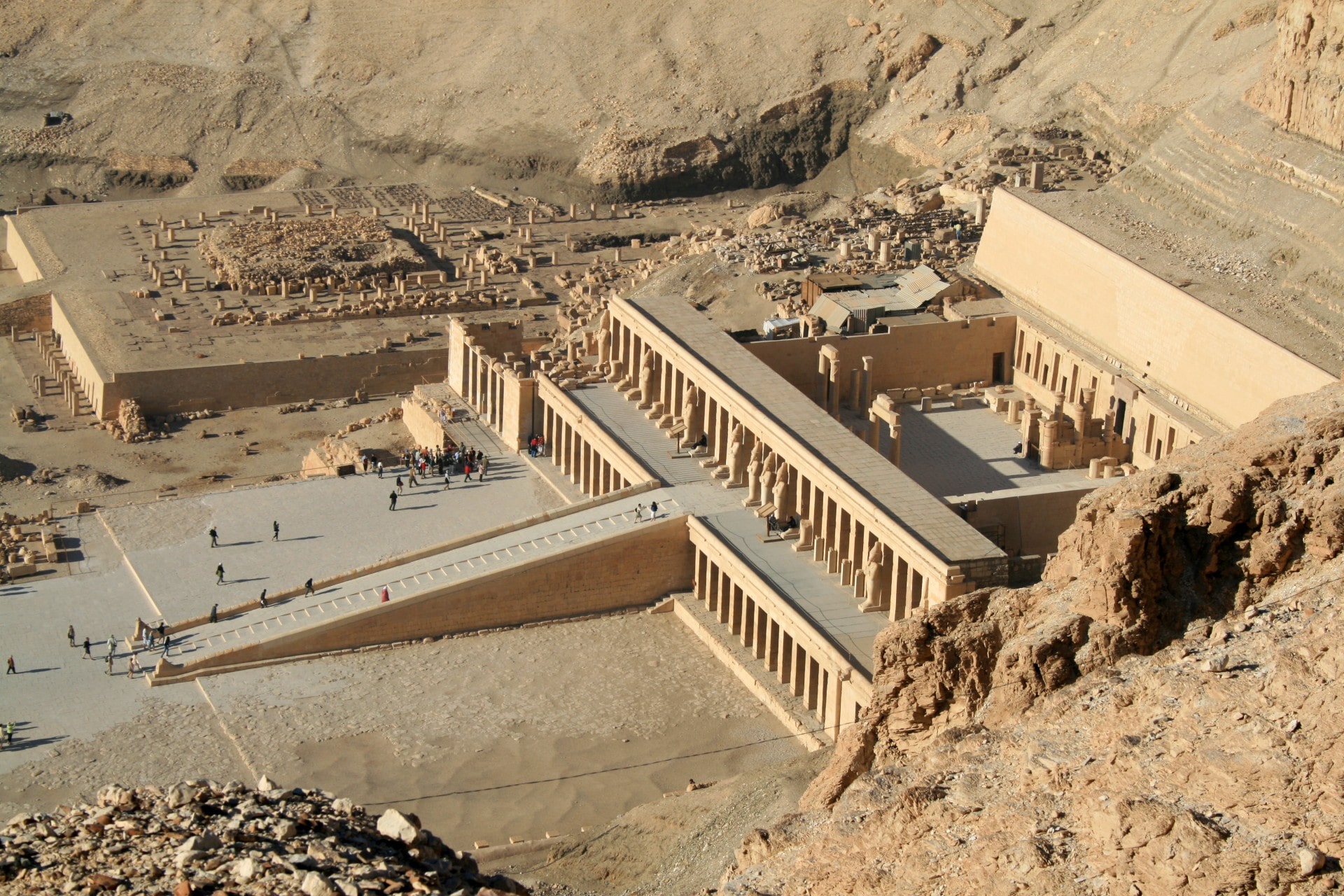
Desecration and erasure of history
Throughout Hatshepsut's reign, Thutmose III had been busy at court, but led the armies of Egypt on successful campaigns of conquest. Hatshepsut had given him supreme command of the army, and he did not disappoint him. Thutmose III is considered one of the greatest military leaders in ancient Egyptian history. And most consistently successful during the New Kingdom period.
TUTHMOSIS III HAS DESTroyed ALL EVIDENCE OF HIS REIGN IN ALL PUBLIC MONUMENTS. BUT HE LEFT HIS DIVINE BIRTH STORY RELATIVELY UNINTACTED. AND HIS EXPEDITION TO SEARCH IN HIS MORTUARY TEMPLE.
Around 1457 BC, Thutmose III led his armies to victory at the Battle of Megiddo, a campaign probably anticipated and prepared by Hatshepsut. And subsequently, his name disappears from the historical records.
Thutmose III had all evidence of his reign destroyed by erasing his name and having his image cut from all public monuments. It indicates his reign on the death of his father and Hatshepsut's accomplishments as pharaoh are attributed to him. Senenmut and Neferu-Ra were already dead by this time. And it seems anyone was personally loyal to Hatshepsut. Had neither the power nor the inclination to challenge Thutmose III's policy regarding the memory of his mother-in-law.
To erase his name on earth is to condemn this person to non-existence. In ancient Egyptian beliefs, you had to remember someone in order to continue your eternal journey in the afterlife. Although Thutmose III seems to have ordered this extreme measure.
There is no evidence of enmity between him and his stepmother, and significantly so. He left the story of his divine birth and expedition to Punt relatively intact inside his mortuary temple. Only the public mention of her has been erased. This would indicate that he did not hide Hatshepsut's ill will personally. But that he was trying to eradicate any obvious evidence of the strength of a female pharaoh.
The monarch of Egypt is traditionally a man. According to the legendary first king of Egypt, the god Osiris. Although no one knows for sure why Thutmose III chose to remove his mother-in-law from the story.
It's probably because she broke with the tradition of male rulers. And that he didn't want women in the future to imitate Hatshepsut in this way. Pharaoh's most vital duty was the maintenance of ma'at. Also honoring the traditions of the past was part of it in that it maintained balance and social stability. Even if Hatshepsut's reign had been successful, there was no way to guarantee another wife.
Inspired by his example, would be able to govern as effectively. Let the precedent of a capable woman as pharaoh stand. Could therefore have been very threatening to Thutmose III's understanding of ma'at.
Although the interior reliefs, paintings and inscriptions of his temple remained largely intact. Some are disfigured by Thutmose III and others by Pharaoh Akhenaten (1353-1336 BC).
Thutmose III had replaced his images with his own, buried his statues, and built his own mortuary temple at Deir el-Bahri. Between that of Hatshepsout and that of Mentuhotep II. His temple is much smaller than either. But that wasn't a problem since he essentially took over Hatshepsut's temple as his own.
Akhenaten, therefore, had no quarrel with Hatshepsut as a female pharaoh. In fact his problem is with his god. Akhenaten is best known as the "heretic king" who abolished the traditional religious beliefs and practices of Egypt. And replaced them with his own form of monotheism centered on the sun god Aten. Although he is regularly hailed as a visionary by monotheists, his action was probably motivated much more by politics than by theology.
The cult of Amun became so powerful during the time of Akhenaten that it rivaled the throne. So a problem faced by a number of kings throughout the history of Egypt. And the abolition of this cult, like all the others, showed the quickest and most effective way to restore balance and wealth to the monarchy. Although Queen Hatshepsut's temple (understood by Akhenaten to be that of Thutmose III) allowed to remain standing. Images of Amon are cut into the exterior and interior walls.
The rediscovery of Hatshepsut
Hatshepsut's name remained unknown for the rest of Egypt's history and until the mid-19th century CE. When Thutmose III destroyed his public monuments, he disposed of the wreckage near his temple at Deir el-Bahri. Excavations conducted in the 19th century AD unearthed these broken monuments and statues. But at that time, no one understood how to read hieroglyphs. Many still believed that they were mere decorations.
The English polymath and scholar Thomas Young (1773-1829 CE) however believed that these ancient symbols represented words. And that hieroglyphs are closely related to Demotic and later Coptic scripts. His work developed by his colleague, sometimes rival, the French philologist and scholar Jean-François Champollion (1790-1832). In 1824 Champollion published his translation of the Rosetta Stone. Proving that symbols are a written language and that this opened up ancient Egypt to the modern world.
Champollion, while visiting the temple of Hatshepsut, mystified by the obvious references to a female pharaoh during the New Kingdom of Egypt, unknown to history. His observations are the first in the modern era to spark interest in the queen. Who today is considered one of the greatest monarchs of the ancient world.
How Hatshepsut died and when she died are unknown until recently. In fact she is not buried in her mortuary temple but in a tomb in the Valley of the Kings (KV60). Located nearby. Egyptologist Zahi Hawass found his mummy in the collections of the Cairo Museum in 2006 CE. So he proved his identity by matching a lost tooth from one of his boxes to the mummy. Examination of this mummy shows that she died in her fifties. From an abscess following the extraction of this tooth.
Although later Egyptian rulers did not know his name. His mortuary temple and other monuments have preserved his legacy. Also his temple at Deir el-Bahri so magnificent that later kings had their own built in the same vicinity.
Also so impressed with this temple and its other works that they claimed them as their own. In fact, there is no other Egyptian monarch except Ramses II (1279-1213 BC). Who erected as many impressive monuments as Hatshepsut.
Although unknown for most of history. His achievements have gained worldwide recognition over the past 100 years. Today, she is a dominant presence in Egyptian and world history. Also represents the very model of the woman that Thutmose III perhaps tried so hard to erase from time and memory.
Have
The Temple of Queen Hatshepsut is open all year round from 7 a.m. to 4 p.m. Go early in the morning to avoid high temperatures. In fact the temple of Queen Hatshepsut is just one of many archaeological marvels. Which make up ancient Thebes with its necropolis. Listed as a UNESCO World Heritage Site. Stay a few days, and descend into the brightly colored tombs of the Valley of the Kings. Walk through the vast temple complex of Karnak. And watch the sunset at Luxor Temple.

